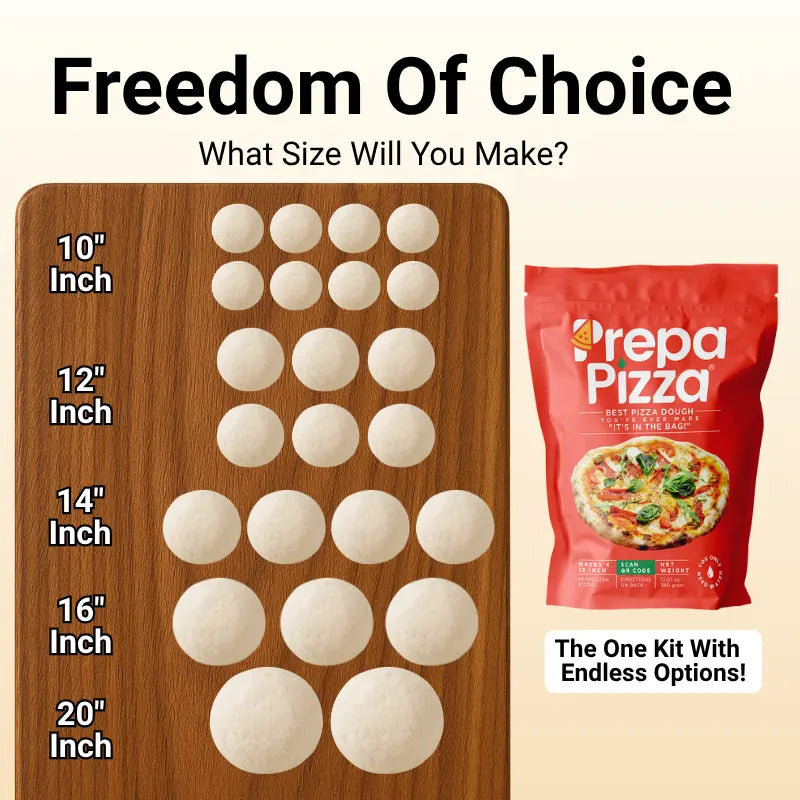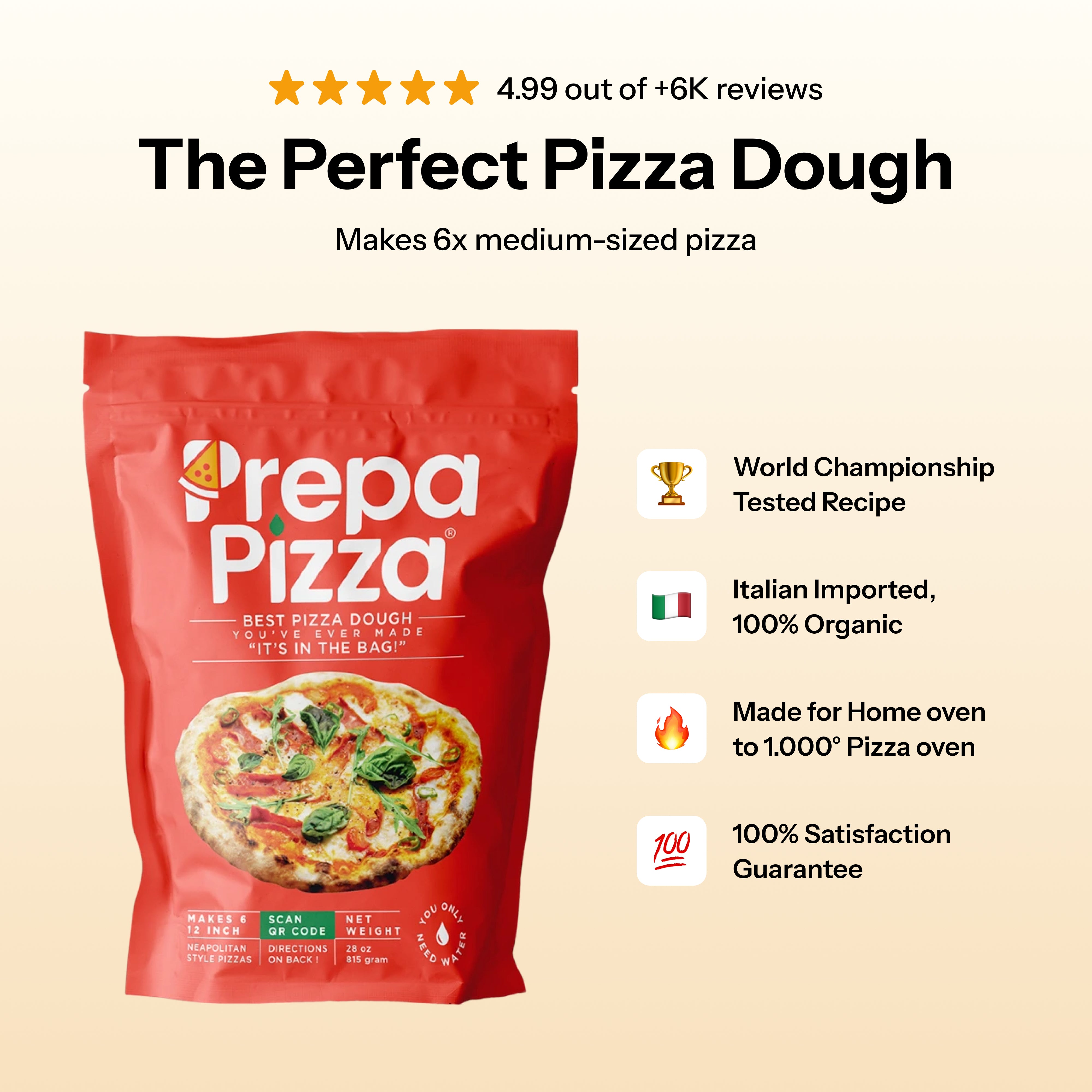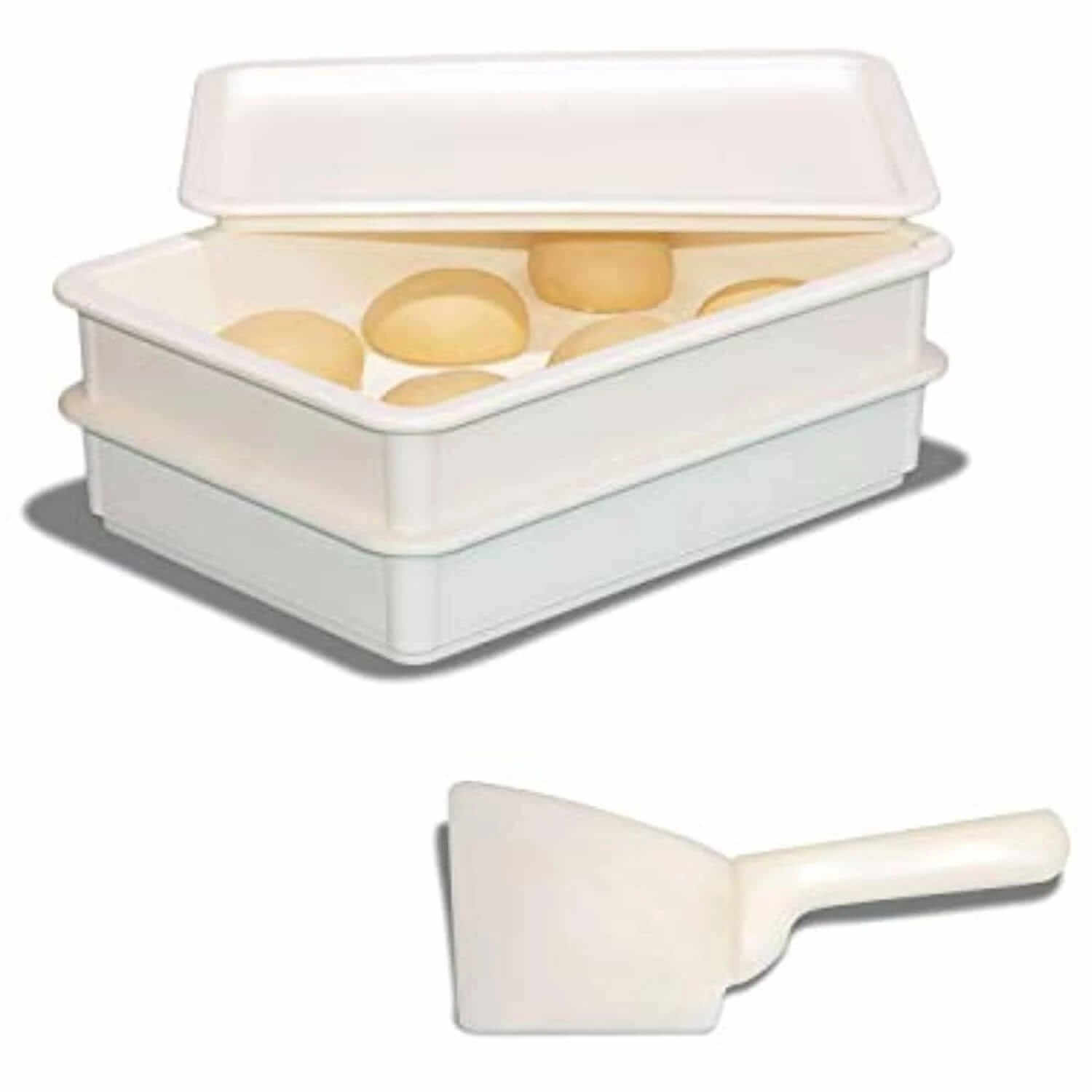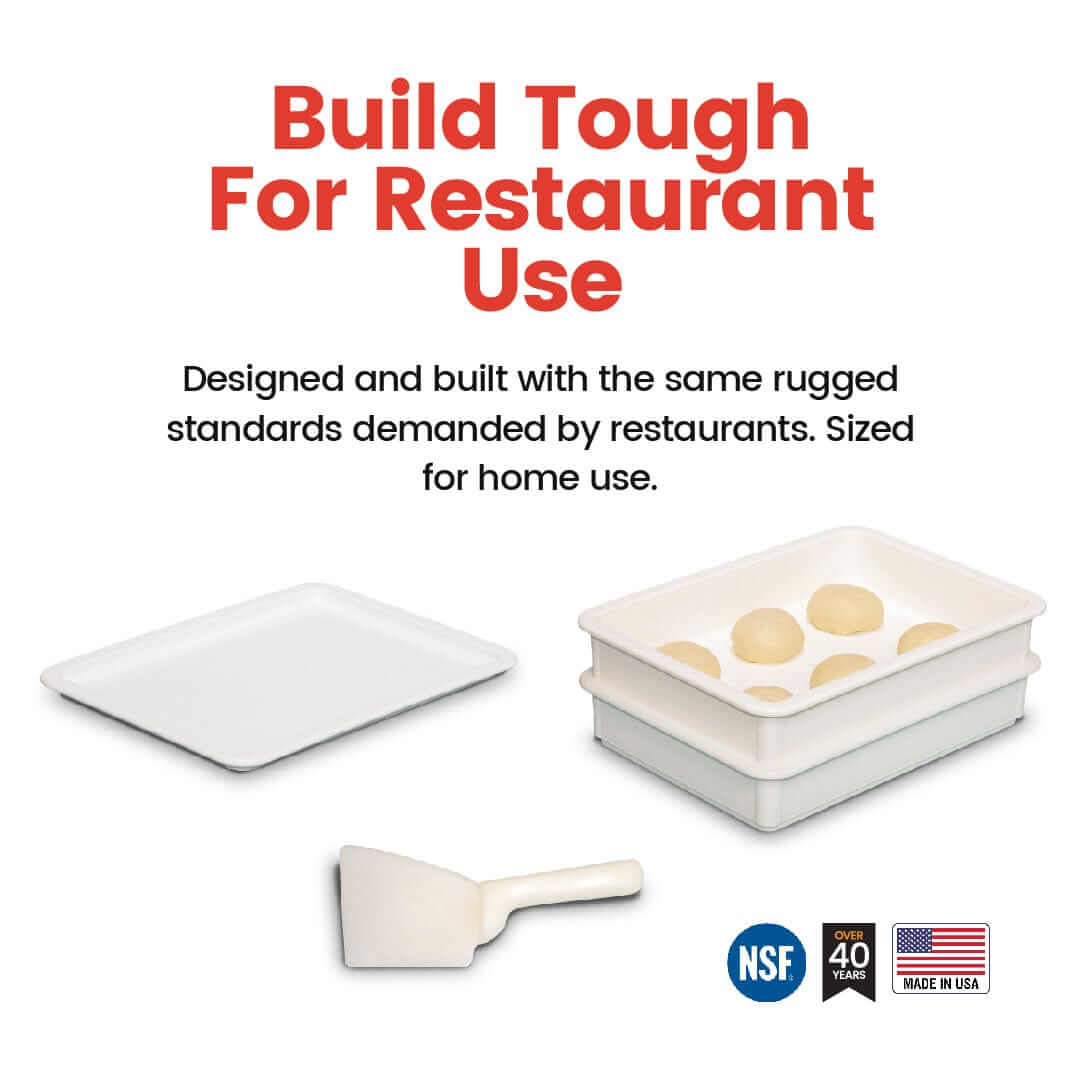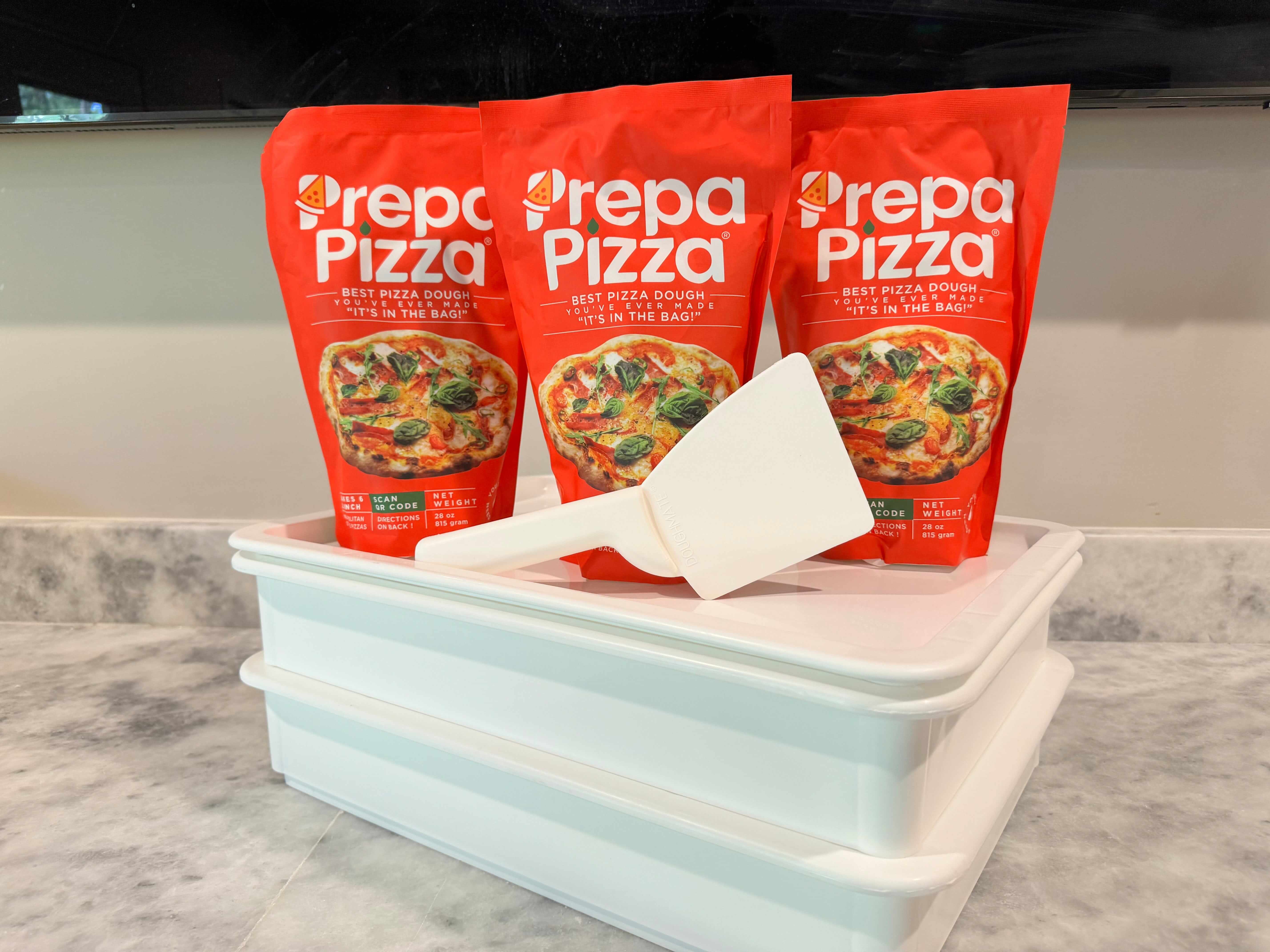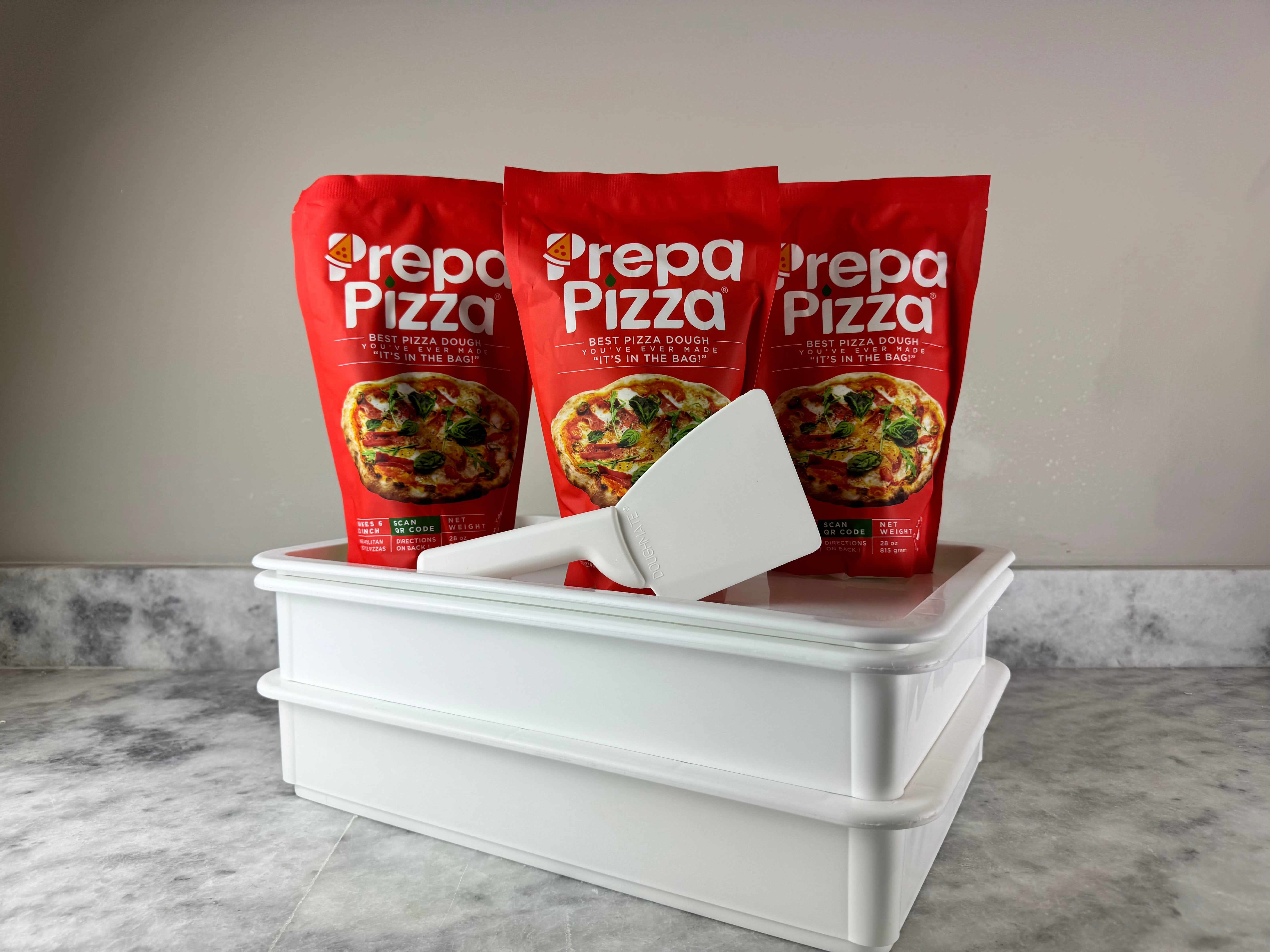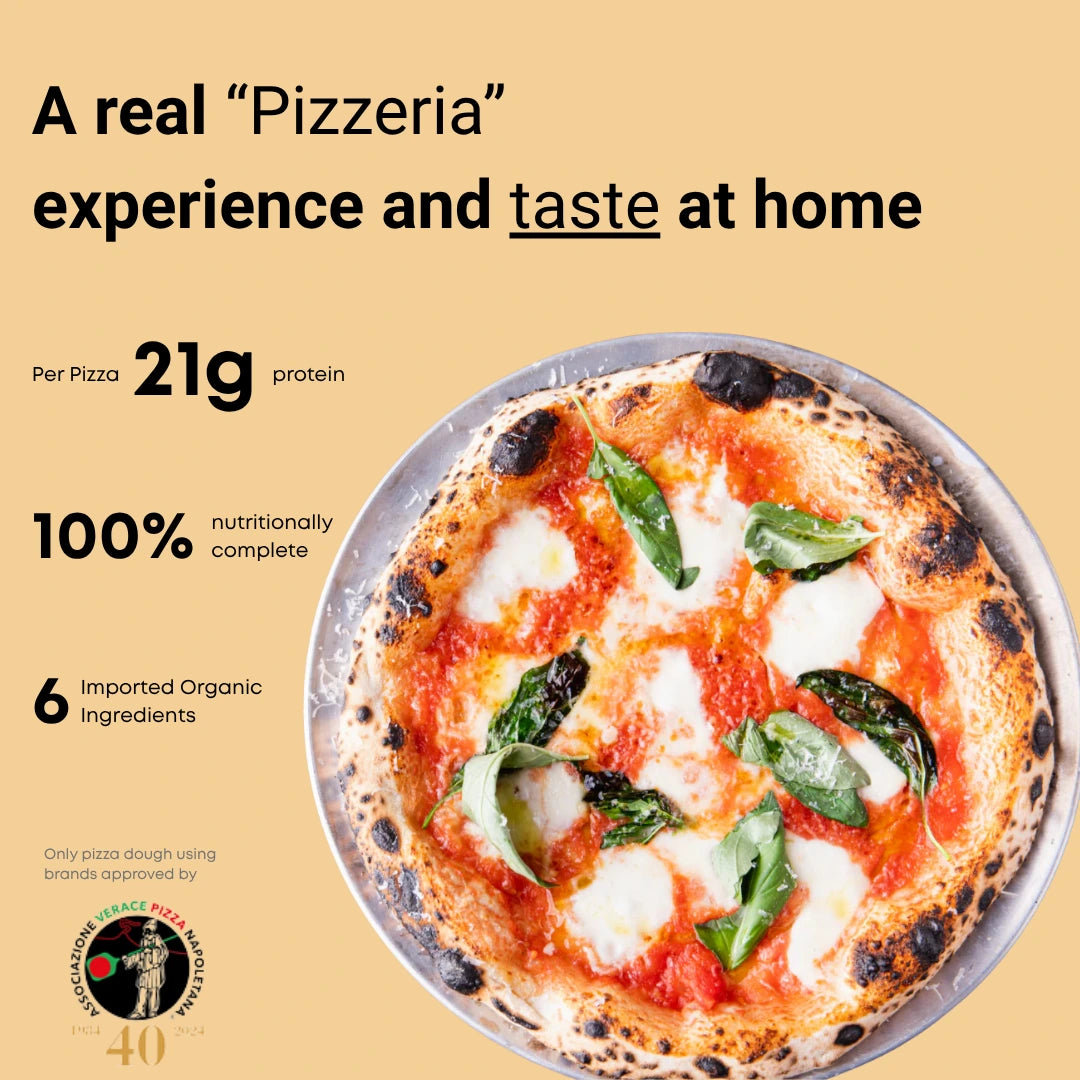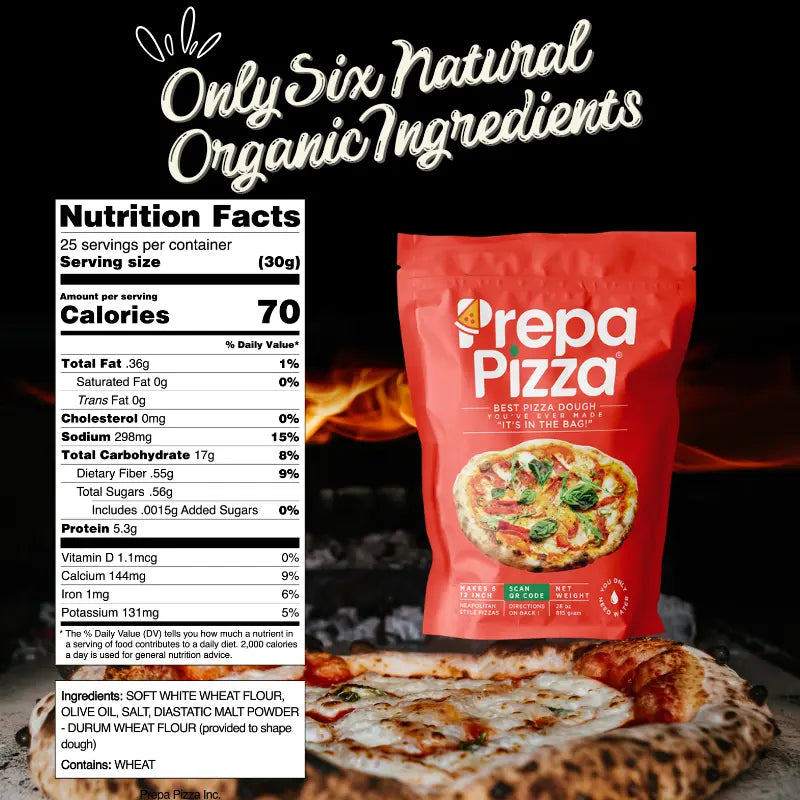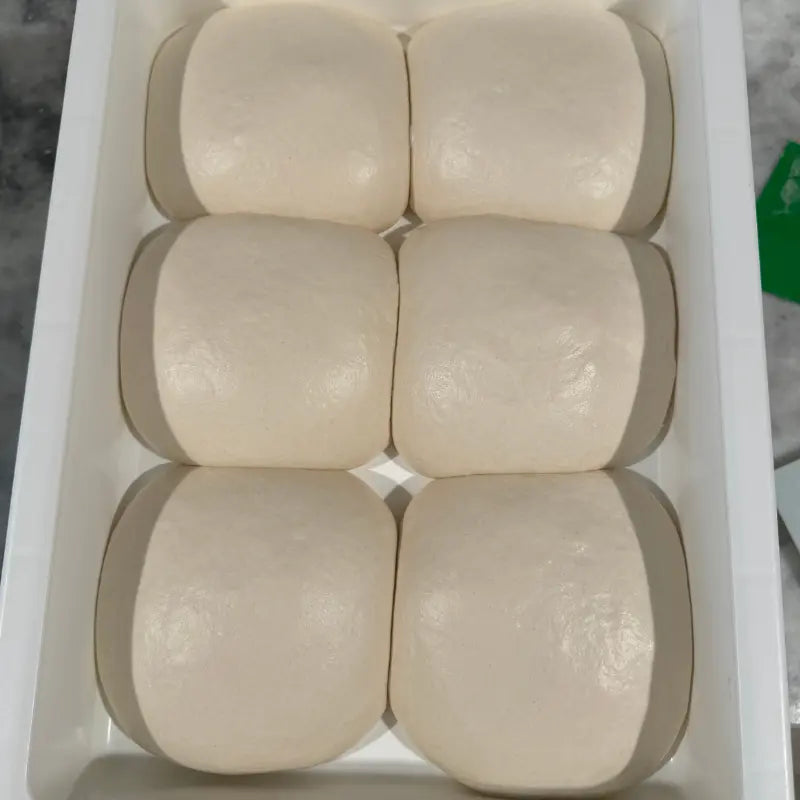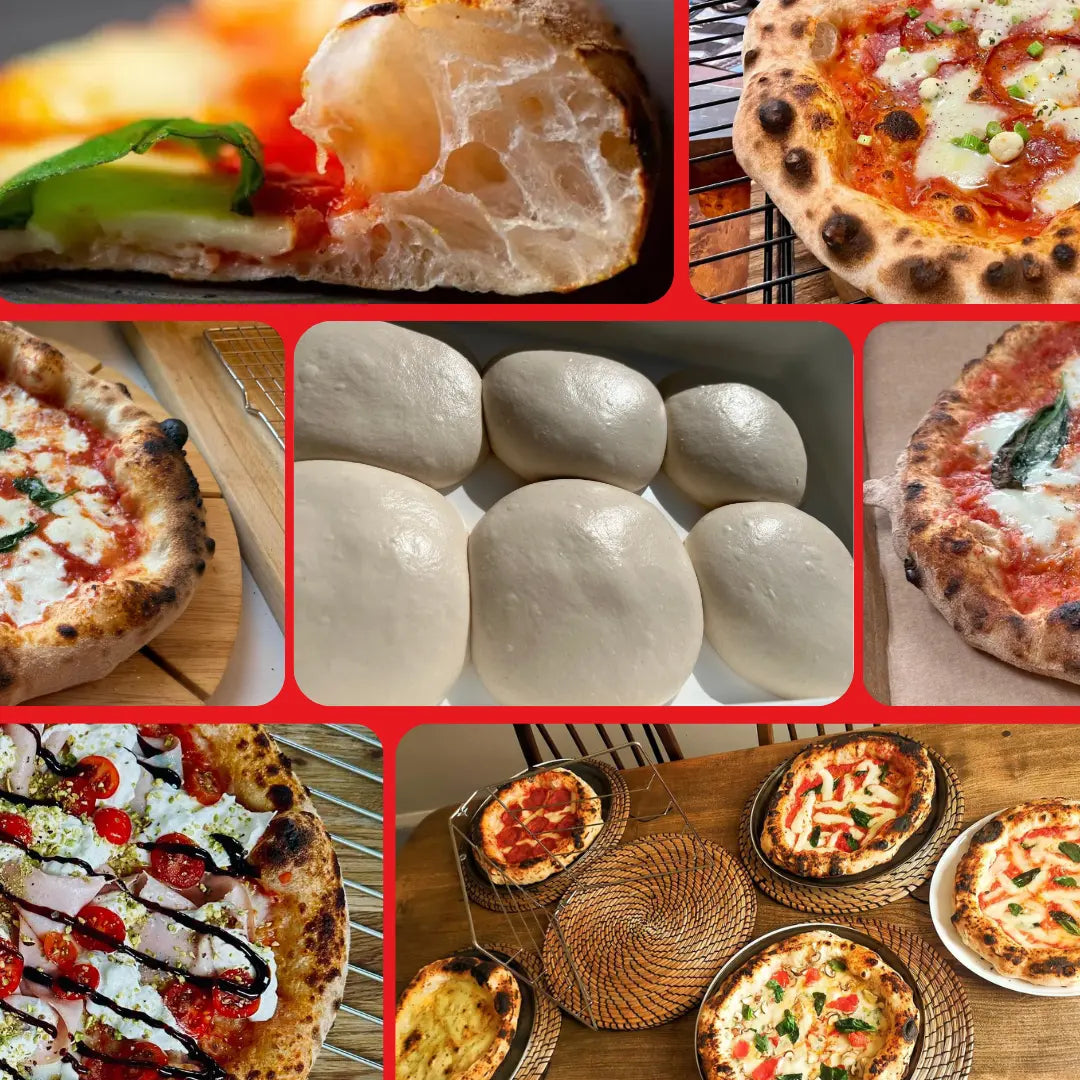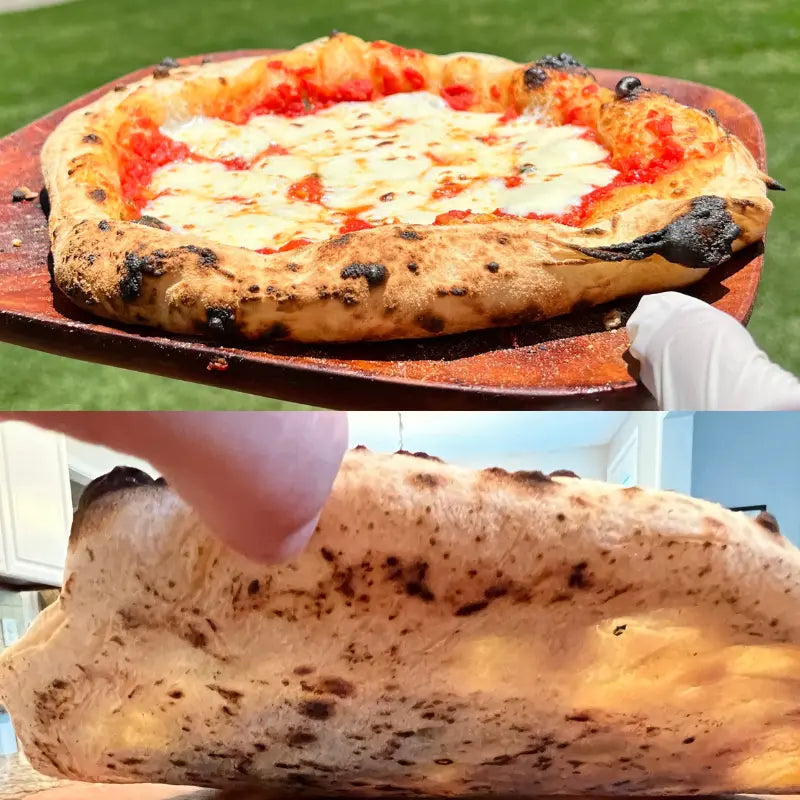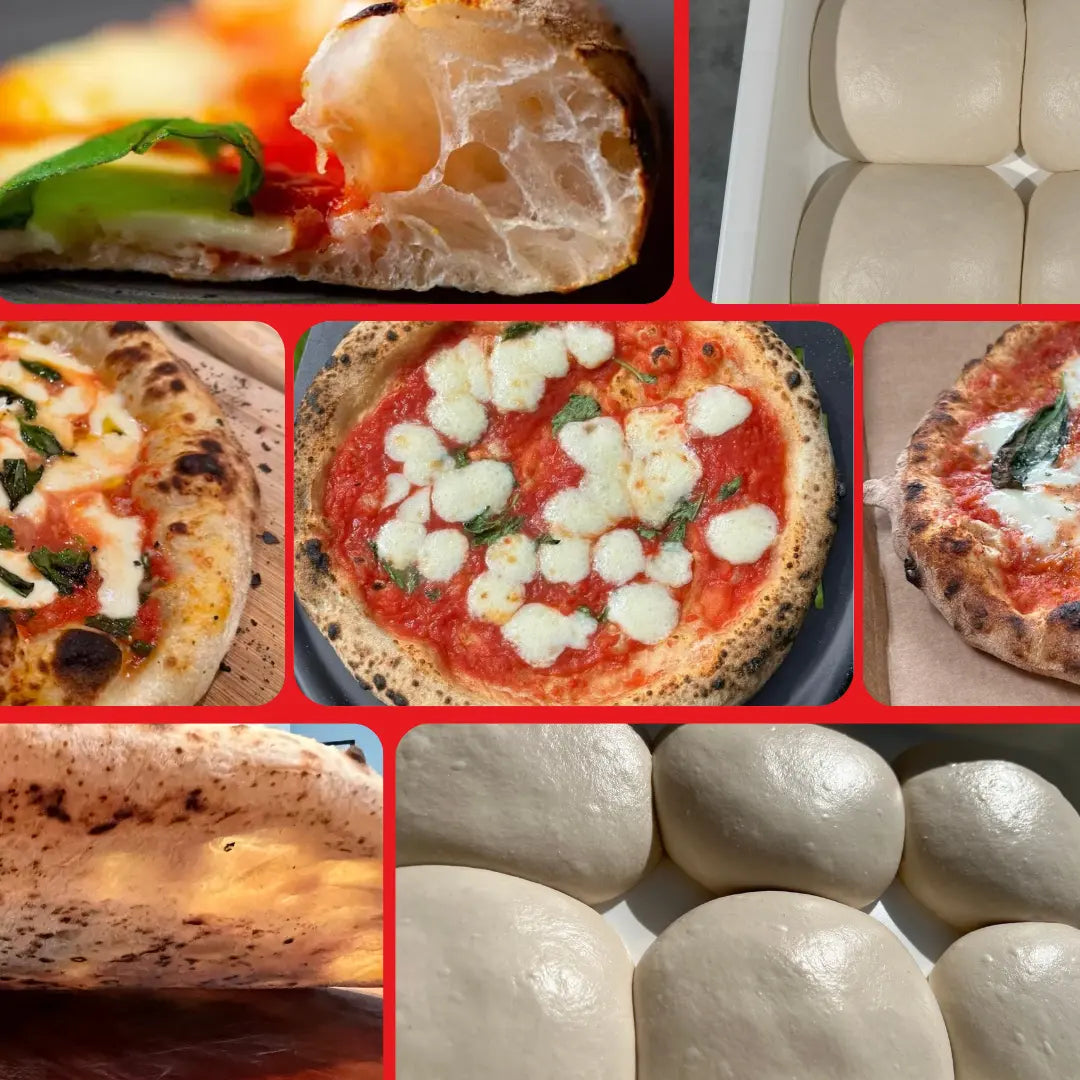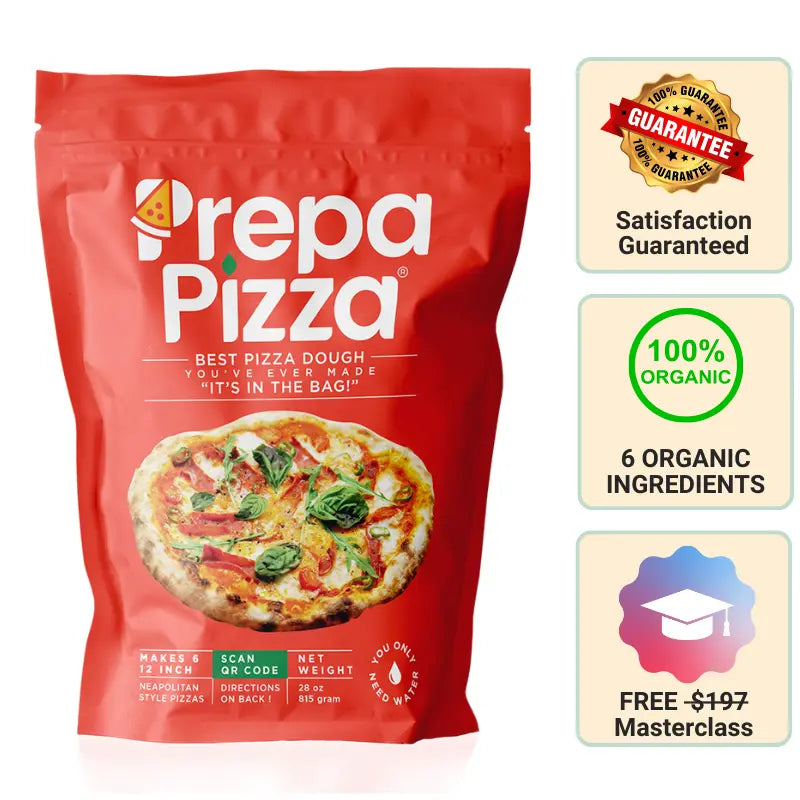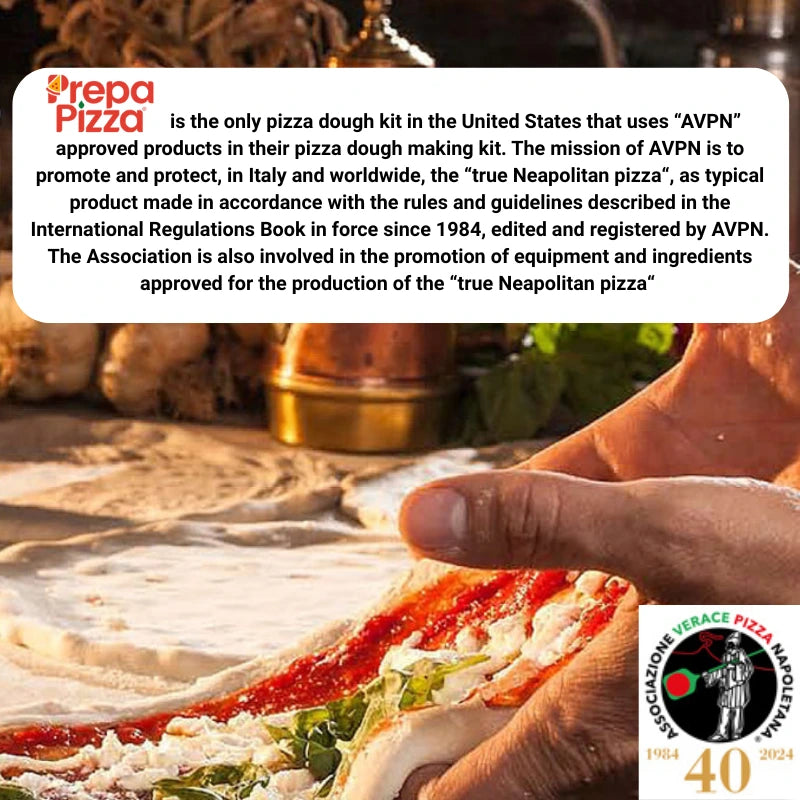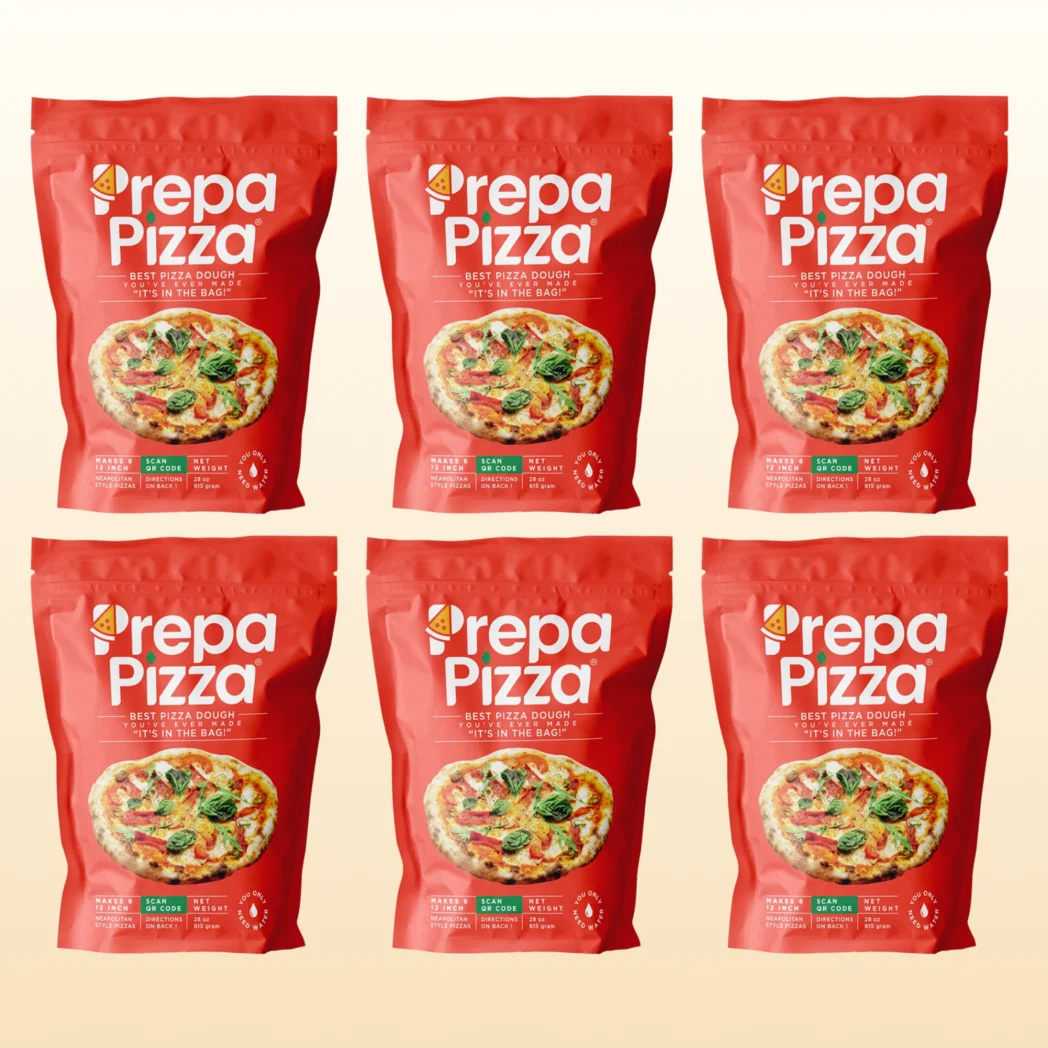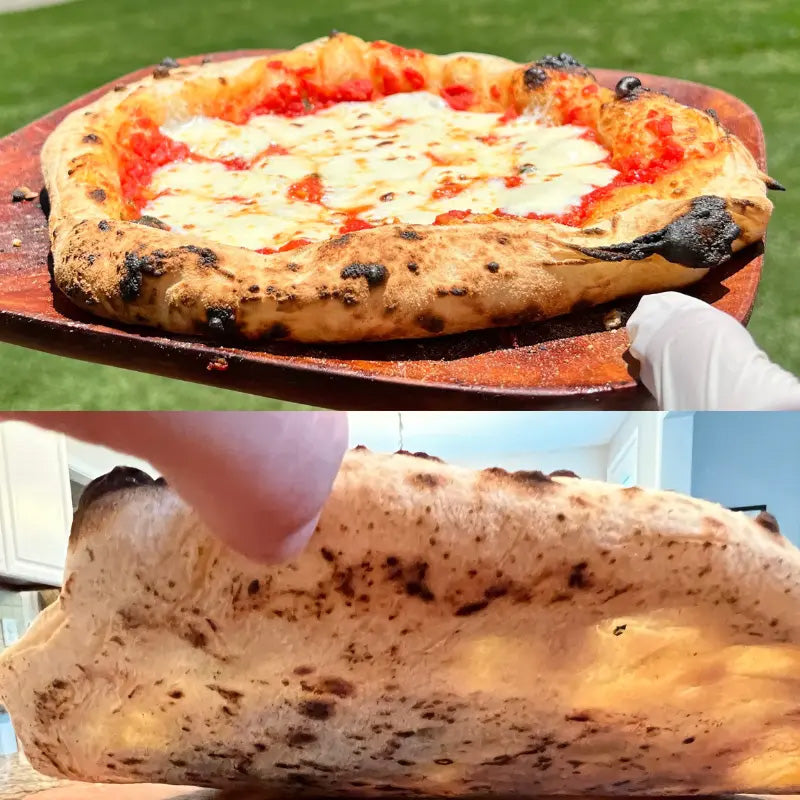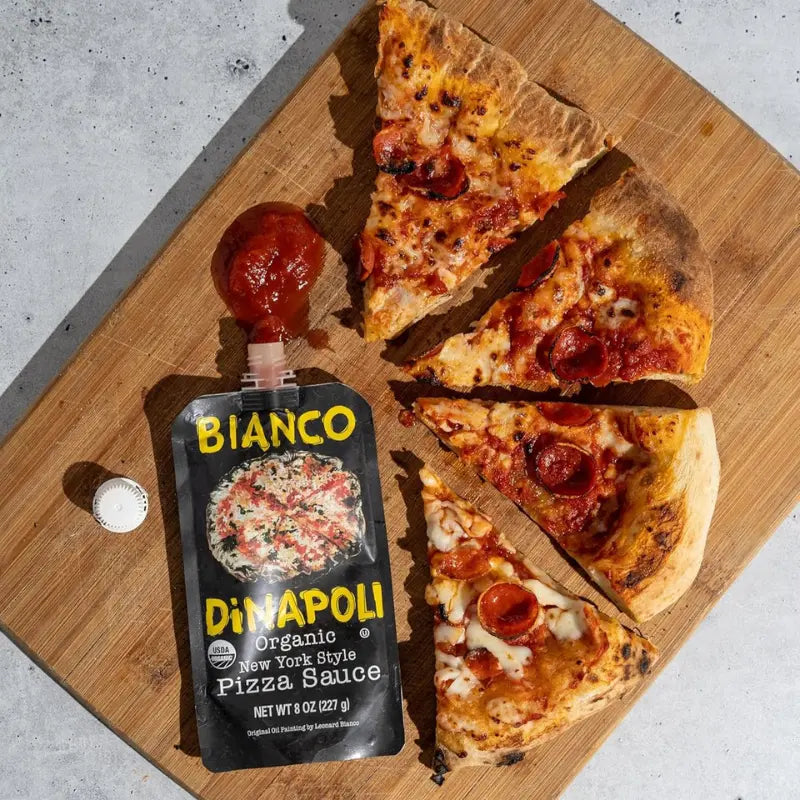
How To Make Pizza With Premade Dough Crispy Easy Tips For A Perfectly Crunchy Crust
Making a crispy pizza crust with premade dough is easier than you might think, especially when you start with high-quality ingredients like Prepa Pizza’s premium dough. This dough is crafted to give you restaurant-quality results with minimal effort. The key to getting a crispy crust lies in controlling moisture and baking at the right temperature, ensuring your Prepa Pizza dough transforms into a golden, crunchy base every time.
Using Prepa Pizza’s premade dough kit means you're working with a reliable foundation designed for excellent texture and flavor. By following simple baking techniques, such as preheating your oven properly and using a pizza stone or baking steel, you can turn your dough into a crispy masterpiece without the guesswork. Find the dough you need to get started here.
With the right dough and methods, you don’t have to compromise on crispiness when using premade crust. This guide will walk you through the best steps to achieve that perfect crunch and elevate your homemade pizza experience.
Understanding Crispy Pizza with Premade Dough
Achieving a crispy pizza crust requires attention to dough quality, moisture control, and baking techniques. Your choice of dough significantly affects the texture of the pizza crust, influencing crispiness and chewiness. Using a premium product like Prepa Pizza’s premade dough, crafted with high-quality ingredients, gives you a reliable foundation for a crispy, restaurant-quality crust every time.
How the crust crisps depends on factors such as hydration level, baking temperature, and preparation methods. Understanding these elements helps you manage expectations and improve results when working with premade pizza dough like Prepa Pizza’s, available at Prepa Pizza Dough Kit.
What Defines a Crispy Crust
A crispy crust is characterized by a firm, crackling exterior that resists bending, often making a slight cracking sound when sliced or bitten. This texture results from sufficient moisture evaporation during baking and proper heat exposure. It contrasts with a chewy crust, which is softer and more elastic inside.
In premade pizza dough, controlling moisture is critical. Excess water or toppings that release moisture can cause sogginess, preventing a crisp crust. High baking temperatures (typically 475°F to 500°F) and baking on a hot surface, like a pizza stone or steel, foster the rapid evaporation needed for crispiness.
Prepa Pizza’s dough is formulated to balance hydration and elasticity, helping you create a crust that crisps well while remaining tender inside, giving you optimal textural contrast in your homemade pizza.
Types of Crispiness and Texture
Crispiness varies depending on which part of the crust you focus on. The bottom crust should be firm and crunchy but not burnt, while the edges might be thicker and delightfully crisp outside with a slight chew inside.
You can expect three primary textures with quality premade dough:
- Bottom Crisp: Thin and evenly browned to prevent sogginess.
- Edge Crisp: Firmer crust with a light crunch and airy interior.
- Chewy Interior: Provides balance, avoiding a dry or brittle pizza.
Different baking methods influence these textures. For instance, using a perforated pan or pizza stone allows better air circulation and heat transfer, promoting balanced crisping. Prepa Pizza’s dough supports these techniques, allowing you to adjust baking to target your preferred crispiness and chewiness.
Benefits of a Crispy Edge
A crispy edge elevates the homemade pizza experience by providing a contrast to the softer center. It adds a satisfying crunch and structured bite, improving overall texture perception.
This crisp edge also helps support toppings and sauce, preventing excessive sogginess. The slight chew inside the edge gives it a handcrafted feel, often missing in lower-quality doughs.
Using Prepa Pizza’s premade dough means you benefit from premium ingredients engineered for consistent results. You get a crust that crisps well on the outside without compromising chewiness inside, allowing you to recreate restaurant-level quality at home.
Choosing and Preparing Store-Bought Pizza Dough
To achieve a crispy crust, you need to start with high-quality store-bought dough and prepare it properly. The type of flour used, how you handle the dough ball, and allowing the dough to come to the right temperature all play key roles in your pizza's texture.
Prepa Pizza offers premium quality premade pizza dough made with carefully selected ingredients to give you a restaurant-quality base. You can find their Prepa Pizza Dough Kit, which simplifies your pizza-making process without sacrificing quality.
Selecting High-Quality Dough
Start by choosing dough that has the right balance of hydration and elasticity. Prepa Pizza’s premade dough is formulated to provide a consistent rise and texture. For best results, opt for fresh dough over frozen when possible, as frozen dough may require longer thawing and can affect crispiness.
Look for dough made with bread flour or a high-protein flour blend. These give better gluten development, contributing to a chewier yet crispy crust. Avoid doughs that are overly wet or sticky, as excess moisture leads to sogginess.
Shaping and Handling Dough Balls
When working with your dough ball, handle it gently to preserve its structure. Avoid pushing too hard or using a rolling pin that can compress air pockets. Instead, stretch the pizza dough by hand starting from the center to the edges.
Let your dough ball rest at room temperature for 30–60 minutes before shaping; this makes it more pliable and easier to stretch evenly. Proper shaping ensures the crust cooks uniformly, preventing dense or doughy spots.
Flour Selection and Dough Hydration
Flour choice affects dough elasticity and moisture retention. Bread flour, with a higher protein content than all-purpose flour, creates a stronger gluten network. This supports a crust that holds toppings well and crisps reliably.
Be mindful of the dough’s hydration level, which impacts how crisp it will become. Prepa Pizza’s dough is balanced for optimum hydration, but if your dough feels too sticky, lightly dust your surface with flour to improve handling. Use flour sparingly to avoid drying out the dough, which can crack during baking.
Essential Tools and Baking Surfaces for a Crispy Result
Achieving a crispy pizza crust when using premade dough starts with the right baking tools and surfaces. The heat transfer method and how you prepare your workspace play a crucial role in developing that perfect crunch while keeping your toppings cooked evenly.
Using the premium quality premade dough from Prepa Pizza gives you a reliable base. Pairing this with optimal baking tools transforms your pizza into a restaurant-style creation. You can find their dough kit here to get started.
Using Pizza Stones and Baking Steels
Pizza stones and baking steels are essential for crisping up your crust. Both materials absorb and retain high heat, providing an intense and even heat transfer to the dough’s underside. This rapid heat cooks the dough quickly, evaporating moisture and resulting in a golden, crispy base.
A baking steel generally heats faster and stores more heat than a pizza stone, giving an edge in creating a highly crisp crust. Pizza stones, made of ceramic or cordierite, are excellent at holding and distributing heat evenly. Whichever you choose, preheat it thoroughly in your oven to at least 500°F for 30-45 minutes to maximize heat retention.
Both tools work well in conventional or convection ovens but perform better when placed directly on a lower oven rack, close to the heating element, for intense direct heat.
Preheating and Oven Placement
Proper preheating is vital when baking your pizza. The oven and the baking surface must reach high temperatures before the dough touches them. This process rapidly evaporates water in the dough, which is key to crispiness.
For either conventional or convection ovens, preheat at 475–500°F. Convection ovens circulate hot air and often reduce cooking time, but positioning still matters. Place the stone or steel on the lowest rack or just above to expose the pizza’s underside to maximum radiant heat.
Avoid opening the oven door frequently, as this drops temperature and disrupts the crisping process. A fully preheated, high-temperature environment ensures a firm, browned crust. This method complements the premium premade dough from Prepa Pizza to achieve the best results.
Benefits of Cornmeal and Pizza Peels
Cornmeal acts as a natural non-stick agent when dusted on your pizza peel or baking surface. It creates a buffer between the dough and the peel, allowing you to slide your pizza into the oven smoothly without sticking or tearing.
Using a pizza peel is essential for handling your pizza safely and efficiently. Wood or metal peels work well, but a wooden peel dusted with cornmeal prevents sticking during transfer. Cornmeal also adds a slight crunch to the crust’s bottom edge, enhancing texture.
Together, cornmeal and a pizza peel make it easier to maneuver the dough and ensure it reaches the hot surface intact. This precision helps preserve the integrity of Prepa Pizza’s premium dough, supporting the crispy crust you want.
Step-by-Step Techniques for Crispy Premade Dough
Achieving a crispy crust with premade dough requires attention to how you prepare, top, and bake it. Using high-quality dough like Prepa Pizza’s premade dough provides a solid foundation for crispiness due to its premium ingredients and restaurant-quality consistency. You’ll need to pre-bake the dough, apply sauce and toppings carefully, and bake at the right temperature and duration.
Prepa Pizza’s dough can be found at this link to their premade dough kit, which ensures you start with a product designed for the best home pizza results.
Pre-Baking the Crust
Pre-baking, or prebaking, the pizza crust is essential for a crispy base. Begin by rolling out Prepa Pizza’s dough and placing it on a pizza pan or pizza stone. Brush the surface lightly with olive oil to create a moisture barrier, preventing sogginess during the later bake steps.
Bake the crust in a preheated oven at 450°F (232°C) for 5 to 7 minutes before adding any toppings. This step firms up the dough’s surface by partially cooking it, so it doesn’t absorb excess moisture from sauces. It also allows the edges to start crisping up early.
After prebaking, remove the crust and add sauce and toppings promptly to avoid losing heat. Pre-baking helps you build a sturdy foundation for the pizza’s toppings while securing a firm, crispy texture.
Proper Saucing and Topping Application
Using the right amount and type of sauce is critical for maintaining crispiness. Apply a thin, even layer of pizza sauce or tomato sauce to avoid saturating the crust. Too much sauce increases moisture and results in a soggy base.
Choose sauces that are not overly watery, preferably thicker tomato sauces or concentrated pizza sauces. Spread sauce evenly but sparingly.
Add toppings strategically, prioritizing fresh ingredients with lower moisture content (e.g., sliced olives, cured meats, cheese with low water content). Avoid overloading your pizza with wet vegetables like fresh tomatoes or watery cheeses. If using such toppings, pat them dry before placing.
Lightly drizzle olive oil over the pizza to enhance browning and crispness without adding unwanted moisture. Proper saucing and topping balance is key to preserving the crispiness gained from prebaking.
Optimal Baking Time and Temperature
To finalize a crispy crust, bake your pizza at a high temperature, ideally between 475°F and 500°F (245°C to 260°C). If you use a pizza oven or preheated pizza stone, the intense heat will help develop a crunchy crust.
Bake for 8 to 12 minutes, depending on your oven and pizza thickness. Watch the crust edges for a golden-brown color and slight charring as an indicator of crispiness. Avoid underbaking, which leaves a soft, doughy crust.
Using a pizza pan with holes or perforations can improve airflow and heat penetration, enhancing crust crispiness.
Maintain consistent oven heat throughout the baking process and avoid opening the door frequently, which lowers temperature and affects texture. The combination of high heat and proper timing ensures your Prepa Pizza premade dough turns into a deliciously crisp pizza crust.
Toppings and Cheese Choices for Enhanced Crispiness
Choosing the right toppings and cheese, along with managing moisture and quantity, directly affects how crispy your pizza crust becomes when using premade dough. Proper selection and preparation can prevent sogginess and support the crisp edges you want from your Prepa Pizza dough.
Cheese Selection and Preparation
Mozzarella remains the best cheese for a crispy pizza crust because of its moisture balance and meltability. Opt for shredded low-moisture whole-milk mozzarella, which melts evenly and forms crispy golden edges. Avoid fresh mozzarella with high water content unless it’s thoroughly drained and patted dry.
You can enhance flavor and texture by mixing cheeses. For example, adding a small amount of Muenster offers stretchiness and a rich taste without adding excess moisture. Pre-shredding the cheese or grating it yourself helps control moisture better than slices, allowing your Prepa Pizza dough’s crust to crisp properly without becoming soggy beneath cheese pools.
Managing Topping Moisture
Excess moisture from toppings like chicken, vegetables, or sauce can soften your crust and reduce crispiness. Use cooked and drained chicken rather than raw to limit moisture release during baking. For vegetables, try roasting or sautéing beforehand to remove extra water.
Be cautious with pizza sauce. Spread it thinly and evenly over the dough, as thick sauces can soak into the crust. Avoid watery sauces or drain any liquid before applying. These steps help preserve the integrity of the crisp crust you achieve with Prepa Pizza’s premium premade dough.
Balancing Topping Quantity
Too many toppings weigh down the dough and lock in moisture, compromising crispiness. Use a moderate amount of toppings to let heat reach the dough and crisp it evenly. Layer cheese and toppings strategically; a base layer of cheese under heavier items like chicken can serve as a moisture barrier.
Keep the edges free or lightly topped to allow maximum exposure to heat, facilitating a crispy crust perimeter. Proper portioning of your ingredients, combined with Prepa Pizza’s quality dough, ensures a balanced pizza that crisps well without sacrificing flavor or texture.
Avoiding Common Mistakes and Troubleshooting
Getting a perfectly crispy pizza crust with premade dough depends on managing moisture, heat, and timing precisely. You need to avoid sogginess, make sure the crust is cooked evenly, and reheat leftovers properly to maintain that perfect texture. Using Prepa Pizza’s premium premade dough, sourced with restaurant-quality ingredients, gives you a solid foundation for success.
Proper handling of dough—like letting it come to room temperature—and maintaining a hot oven are crucial. For a detailed guide, check out the Prepa Pizza Dough Kit.
Preventing Soggy Pizza
Soggy pizza crust usually results from excess moisture or uneven heat distribution. Using Prepa Pizza’s premium dough helps reduce this risk because it’s designed to bake into a crisp, light crust when handled correctly.
To prevent sogginess:
- Preheat your oven fully to at least 475°F (245°C) or higher.
- Avoid overloading toppings, especially watery vegetables or too much sauce.
- Use a pizza stone or steel for even heat transfer and better crust crisping.
- Dust your peel or baking sheet with flour or cornmeal to avoid sticking, which can trap steam underneath the crust.
These steps help moisture evaporate quickly instead of soaking into the dough.
Fixing Undercooked or Overcooked Crust
An undercooked crust is often pale and doughy inside, while an overcooked one is dry or burnt. Both can ruin your perfect pizza experience.
To fix this:
- Ensure your oven temperature is accurate; use an oven thermometer if needed.
- Bake your pizza on the lowest rack when undercooked to get more direct heat on the bottom crust.
- If overcooked, reduce baking time or temperature by 25°F next attempt.
- Rotate the pizza halfway through baking so it cooks evenly and avoids hot spots.
Using the Prepa Pizza Dough Kit makes perfect crust timing easier because the dough is formulated for consistent baking results.
Tips for Reheating Leftovers
Reheating pizza can easily lead to a soggy or tough crust if done incorrectly. To revive the crispiness of your leftover pizza:
- Use a skillet on medium heat for 3–5 minutes, covering it briefly to melt cheese without steaming the crust.
- Alternatively, bake in a preheated oven at 375°F (190°C) for 7–10 minutes on a pizza stone or baking sheet.
- Avoid microwaving as it introduces too much moisture, making the crust soft and chewy.
With these reheating methods, you’ll maintain the crispy texture of the original pizza made from Prepa Pizza’s premium dough.
Frequently Asked Questions
Using premade dough from Prepa Pizza ensures you start with a premium base crafted for restaurant-quality results. Their dough is made from high-quality ingredients designed to help you achieve a crispy crust with the right techniques and baking approach.
Controlling oven temperature, handling the dough properly, and using appropriate baking methods are essential to crispiness when working with Prepa Pizza’s premade dough. You can explore their premium dough options here.
What is the ideal oven temperature for baking premade pizza dough to achieve a crispy crust?
The best oven temperature to get a crispy crust with premade dough is typically between 475°F and 500°F (245°C to 260°C). This high heat helps quickly crisp the dough’s exterior while cooking the inside evenly.
Make sure your oven is fully preheated before baking to maintain consistent heat, which is crucial for crispiness using Prepa Pizza dough.
Should I prebake my pizza dough before adding toppings and if so, how long for?
Prebaking your dough for 4 to 6 minutes at a high temperature can help firm up the crust and prevent sogginess. This step is especially useful with premade dough to ensure the base stays crisp under moist toppings.
After prebaking, add your toppings and finish baking until golden and crisp.
Can you share tips on how to properly roll out store bought pizza dough for a crispier base?
Roll your Prepa Pizza premade dough evenly, aiming for a thin and uniform thickness to help crispness without sacrificing structure. Avoid pressing too hard, which can compress the dough and reduce its ability to rise and crisp.
Use a light dusting of flour and work quickly to keep the dough cool, which supports better texture.
What are the steps for cooking store bought pizza dough directly in an oven?
Stretch or roll the dough to your desired thickness, transfer it to a pizza stone or baking sheet, then preheat the oven to 475°F or higher. You can prebake the crust for 4-6 minutes.
After prebaking, add sauce and toppings and bake for another 8-12 minutes until the crust is golden and crispy.
Is it necessary to use any special techniques when cooking premade pizza dough to enhance crispiness?
Yes. Using a pizza stone or steel preheated in the oven transfers intense heat to the dough’s bottom, aiding crispiness. Avoid soggy crusts by limiting watery toppings and using less sauce.
Also, transfer your pizza using a pizza peel or parchment paper to avoid disturbing the dough’s shape.
How can I prevent my premade pizza crust from getting soggy or undercooked?
Prebake your Prepa Pizza dough slightly before topping. Use toppings that aren’t overly wet and drain excess moisture from vegetables or meats.
Baking directly on a preheated surface and at high temperatures helps avoid soggy or undercooked crusts, ensuring a crispy result every time.

